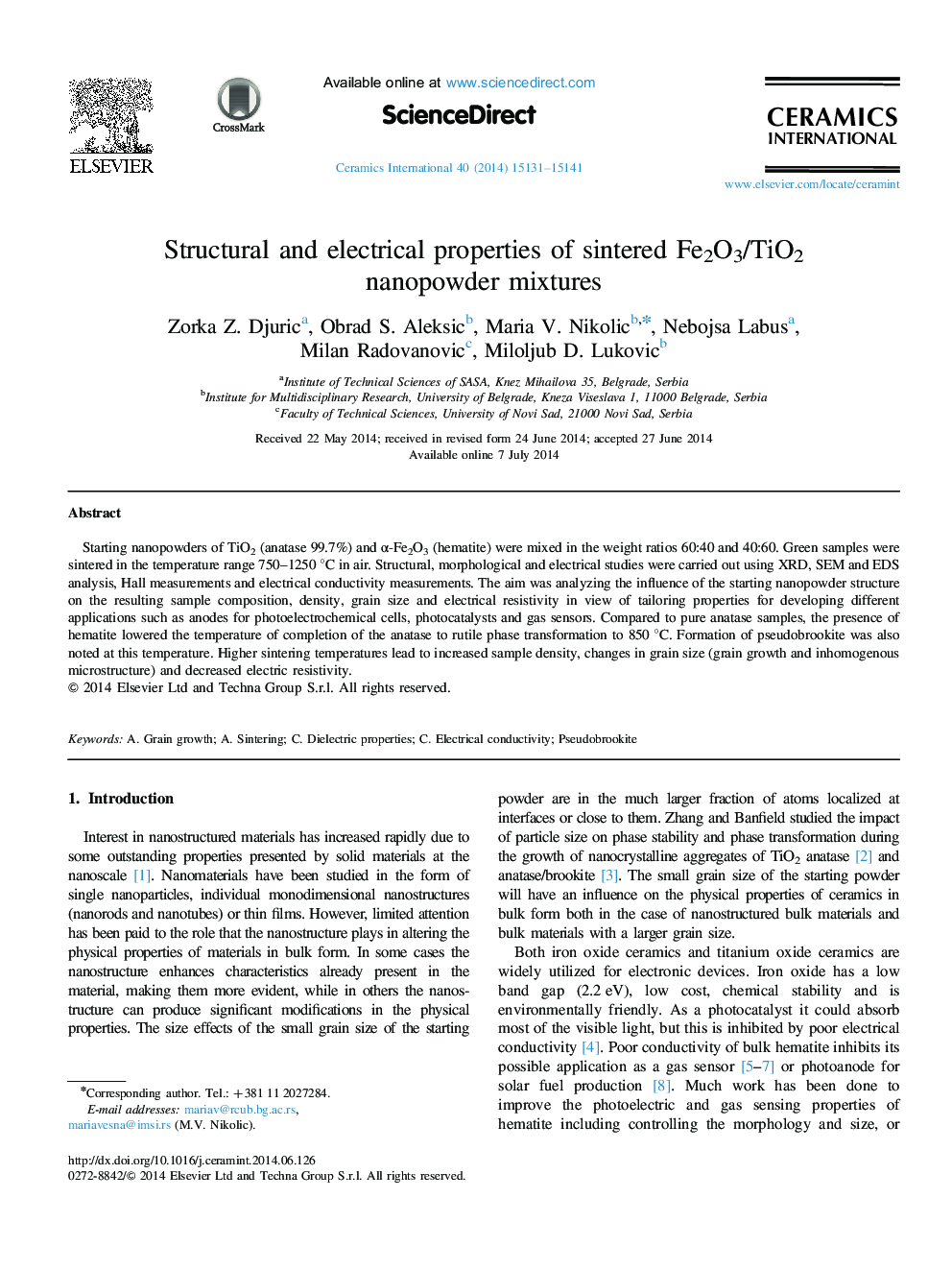| Article ID | Journal | Published Year | Pages | File Type |
|---|---|---|---|---|
| 1461263 | Ceramics International | 2014 | 11 Pages |
Starting nanopowders of TiO2 (anatase 99.7%) and α-Fe2O3 (hematite) were mixed in the weight ratios 60:40 and 40:60. Green samples were sintered in the temperature range 750–1250 °C in air. Structural, morphological and electrical studies were carried out using XRD, SEM and EDS analysis, Hall measurements and electrical conductivity measurements. The aim was analyzing the influence of the starting nanopowder structure on the resulting sample composition, density, grain size and electrical resistivity in view of tailoring properties for developing different applications such as anodes for photoelectrochemical cells, photocatalysts and gas sensors. Compared to pure anatase samples, the presence of hematite lowered the temperature of completion of the anatase to rutile phase transformation to 850 °C. Formation of pseudobrookite was also noted at this temperature. Higher sintering temperatures lead to increased sample density, changes in grain size (grain growth and inhomogenous microstructure) and decreased electric resistivity.
